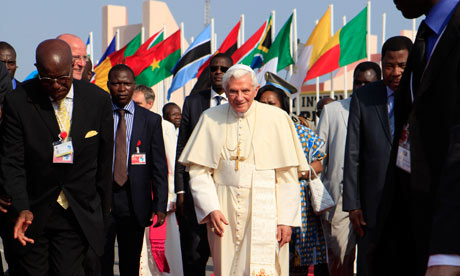“In Africa”, the Holy Father explained, “I saw a freshness in the ‘yes’ to life, a freshness of religious meaning and hope, a holistic vision of reality where God is not confined to that positivist perspective which, in the final analysis, extinguishes all hope. This tells us that the continent contains reserves of life and vitality for the future, reserves upon which we can rely, upon which the Church can rely.”
Out of pure curiosity, I came across this video from Abbaye Keur Moussa, in Senegal, which I was previously unaware of. Although my French is not very strong, this monastery appears to have been established out of Solesmes in 1960.
I am struck by the the singing in this video. Although there is subtle use of percussion and metric singing, this music undeniably is rooted in Gregorian chant, the supreme and universal model of sacred music in the Roman Rite. The melodies sung here are mostly pentatonic, which is the root of most world musics, including Gregorian chant. The style of singing clearly is influenced by Solesmes, though it has a character unto itself.
This strikes me as an example of authentic inculturation. Varietates Legitimae, the fourth Vatican instruction on the “right implementation of Sacrosanctum Concilium” (Liturgiam Authenticam being the fifth), describes authentic inculturation as “a double movement”. It states: “by inculturation, the Church makes the Gospel incarnate in different cultures and at the same time introduces peoples, together with their cultures, into her own community” (VL 4).
So often we see gross distortions of the Roman Rite in the name of “inculturation” that ends up instead amounting to a display of syncretism. I think that what we find below is much closer to the “double movement” envisioned by the Church, and if the future of the Roman Rite in Africa were to resemble something close to this we could probably agree that there is much vitality for the future to be found in Africa.

